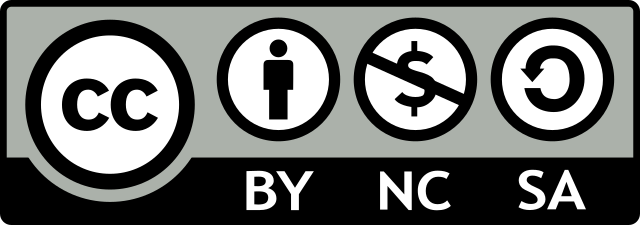Validitas Isi dan Reliabilitas Instrumen Penilaian Harian Mata Pelajaran Bahasa Arab MI Manarul Islam Malang
Abstrak
Tujuan dari penilitian ini adalah : 1) untuk mengetahui validitas isi pada mata pelajaran Bahasa Arab pada Penilaian Harian (PH) di MI Manarul Islam Malang. 2) untuk mengetahui reabilitas pada mata pelajaram Bahasa Arab pada Penilaian Harian (PH) pada bentuk soal multiple choice dan isian di MI Manarul Islam Malang. Penelitian ini merupakan jenis penelitian kuantitatif dengan teknik pengumpulan data melalui tes dari sampel penelitian sejumlah 36 siswa-siswi kelas 4A dan 4B tahun ajaran 2022/2023 serta analisis pengujian butir-butir instrumen tes yang terdiri dari uji validitas dan uji reliabilitas dievaluasi menggunakan SPSS versi 22. Pada penilaian harian mata pelajaran bahasa asing yaitu Bahasa Arab, lembar jawaban siswa digunakan untuk menilai validitas butir soal dan reliabilitas tes instrumen tes (Arab). Hasil dari penelitian ini adalah dimana butir soal pada penilaian harian mata pelajaran bahasa Arab MI Manarul Islam Malang pada uji validitas soal berbentuk multiple choice yang terdiri dari 20 soal, 12 diantaranya tergolong valid sementara 8 soal lainnya tergolong tidak valid. Sedangkan soal berbentuk isian yang terdiri dari 10 soal tergolong valid secara keseluruhan. Pada uji realibilitas soal berbentuk multiple choice dinyatakan memiliki reabilitas yang tinggi. Sementara hasil uji reabilitas soal berbentuk isian dinyatakan memiliki reabilitas yang sangat tinggi.
Referensi
Arikunto, Suharsimi. 2012. Dasar-Dasar Evaluasi Pendidikan. Jakarta: Bumi Aksara
Azwar, Saifuddin. 2012. Reliabilitas dan Validitas. Yogyakarta : Pustaka Pelajar
Bajpai, S., & Bajpai, R. (2014). Goodness of measurement: reliability and validity. International Journal of Medical Science and Public Health, 3(2), 112-116
Brown, H. Douglas. 2004. Language Assessment. Principles and Classroom Practices. San Fransisco: Pearson Education, Inc.
Happy Fitria, Muhammad Kristiawan, dkk, “Upaya Peningkatan Kompetensi Guru Melalui Pelatihan Penelitian Tindakan Kelas”, Jurnal Abdimas Unwahas, Vol. 4, No. 1, April 2019, hlm. 15
House, E.R. (2012). Introduction. In Kellaghan, T., & Stufflebeam, D. L. (Eds.). International
Handbook of Educational Evaluation: Part One: Perspectives/Part Two: Practice (Vol. 9). Springer Science & Business Media.
Margono, S. 1997. Metodologi Penelitian Pendidikan. Jakarta: PT Rineka Cipta
Noor, Juliansyah. 2011. Metodologi Penelitian: Skripsi, Tesis, Disertasi, dan Karya Ilmiah. Jakarta: Kencana
Ratnawulan, Elis dan Rusdiana, A. 2015. Evaluasi Pembelajaran. Bandung: CV Pustaka Setia
Pramono, Sigit. 2014. Panduan Evaluasi Kegiatan Belajar Mengajar. Yogyakarta: Diva Press
Salim, Latifah. 2015. JurnalAdabiyah: Peranan Bahasa Arab Terhadap Ilmu Pengetahuan. Jurnal Vol. 15 Nomor 2
Sudijono, Anas. 2011. Pengantar Statistik Pendidikan. Jakarta: PT Rajagrafindo Persada
Sukiman. (2012). Pengembangan Sistem Evaluasi. Insan Madani: Yogyakarta.
Sullivan, G. M. (2011). A primer on the validity of assessment instruments. Journal of Graduate Medical Education. 3:119-120
Taherdoost, H. (2016). Validity and reliability of the research instrument; how to test the validation of a questionnaire/survey in a research
UU RI no 20 tahun 2003 tentang sisdiknas & Peraturan Pemerintah RI no 47 2008 tentang Wajib Belajar
Widoyoko, Eko Putra. 2012. Evaluasi Program Pembelajaran (Panduan Praktis bagi Pendidik dan Calon Pendidik). Yogyakarta: Pustaka Pelajar
Winda Kusuma Wardani, “Analisis Kompetensi Pedagogik Guru Dalam Proses Pembelajaran di SD Muhammadiyah 15 Surakarta”, Skripsi Program Studi Pendidikan Guru Sekolah Dasar Universitas Muhammadiyah Surakarta, 2017.
##submission.copyrightStatement##
##submission.license.cc.by-nc-sa4.footer##
